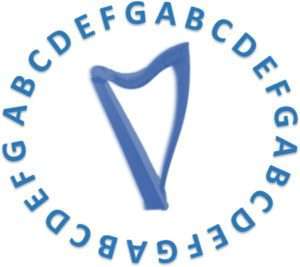Catch up on the discussion – we started with a challenge here and then I shared the tunes I had read here. That lead to discussion which we have below. Feel free to start the challenge now and I’ll look forward to hearing how you get along! And, of course, it would be great if you subscribe here.
Last week I shared the list of tunes I had read through to prepare for the coming holiday season and mentioned that I didn’t love all of them but did plan to include a couple moving forward. The list I shared came from some of the books I happened to have on my shelf. I won’t lie, I didn’t use all my Christmas books, just the ones I could reach from where I was sitting (never underestimate my ability to work hard to stay lazy!).
Eagle-eyed Kate noticed that I didn’t tell you which tunes I liked and want to keep, and which were meh and I’ll ignore – and she asked which were which! So, I thought I would share that this week.

So, the list of tunes I’ll probably work on this year includes:
- Angel Gabriel from Heaven Came (to be fair, I have played this but never really committed it)
- The Holly and the Ivy (I have always loved this one but never play it)
- New Christmas (which I had also found earlier in a bagpiping book and have been intrigued by, and Jo writes lovely arrangements, so I think it’ll be a keeper)
- O Come Little Children (which I heard while in Germany at a Christmas market so it’s like a breathing souvenir!)
I also heard from Sharon Thormahlen who has a number of holiday books available too! I hadn’t seen them, but she graciously sent me copies to read through*. She sent me a book of Carols (Tis the Season) and a book of songs (Season’s Greetings) as well as a single sheet White Christmas. The carols book includes those that get a lot of play (Deck the Hall, Silent Night, What Child is This, Away in a Manger, First Noel) as well as some less often played (Celtic Carol, The Holly and The Ivy). The songs book included tunes I never think of (Christmas in Killarney, Little Drummer Boy) as well as the ones you can’t leave on the table (Let it Snow! Rudolf the Red-Nosed Reindeer, Silver Bells, and a medley of O Christmas Tree/We Wish You a Merry Christmas). I found her arrangements to be approachable and readable, and best of all she has placed the lever changes really thoughtfully so you can actually play without panic! I think I’ll be adding the Christmas Song and maybe Have Yourself a Merry Little Christmas as well as White Christmas!
You might note that I had suggested adding a couple of tunes this year and I have already compiled quite a list! I think it’s safe to say that some will be ready to play this year and some will be better next year – and I’m ok with that! There’s always room for more!
*Sharon also sent me a book of Jewish music and if I had occasion to play a Hanukkah gig, I’d dip into it. If you would like to dip into the holiday books, she has them available on her website. In that internet-y way (and to make sure I don’t break any laws), I need to tell you that I did receive gratis downloads of the books I mentioned. I will not get any (additional) compensation if you do (or do not) buy them. I do hope you will buy books from musicians you’re interested in (e.g. Sharon) (or me for that matter) because it’s the right thing to do.




